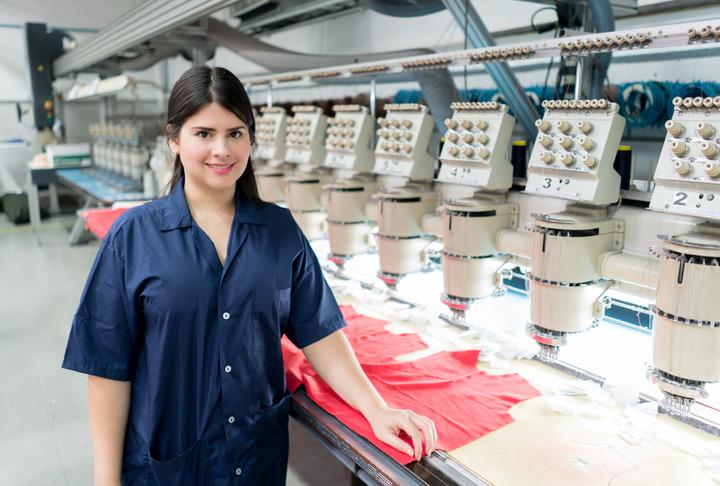Behind Every Stitch: Understanding Embroidery Stabilizers

Embroidery is like baking a cake: You need the right ingredients, precise measurements, and a little magic to make it rise. But even the most beautiful design can flop if you skip one crucial element—the stabilizer. Often overlooked but always essential, stabilizers are the unsung heroes of embroidery. Let’s unravel the secrets to understand embroidery stabilizers, what they are, why they matter, and how to use them to turn your thread-and-fabric dreams into reality.
What Are Embroidery Stabilizers?
Think of stabilizers as the backbone of your embroidery project. They’re materials (usually paper-like sheets or films) placed behind, on top of, or within your fabric to:
- Prevent puckering and distortion as the needle punches through the fabric.
- Support the fabric so stitches lay flat and even.
- Handle tension from dense designs or tricky fabrics (like stretchy knits).
Without a stabilizer, your fabric might warp, stitches could sink, and your design could look more like a crumpled napkin than a masterpiece.
Why Stabilizers Matter in Embroidery
They’re the Difference Between “Meh” and “Wow”
Ever seen a logo on a T-shirt that looks like it’s melting? That’s what happens without proper stabilization. Stabilizers ensure:
- Crisp edges on satin stitches.
- Smooth fills without fabric bunching.
- Durability so designs survive washes and wear.
They Adapt to Your Fabric’s Personality
Stretchy, delicate, or thick fabrics all behave differently under the needle. Stabilizers act as peacekeepers, managing the chaos so your machine can stitch smoothly.
Types of Embroidery Stabilizers
Not all stabilizers are created equal. Here’s your cheat sheet to the most common types:
1. Cutaway Stabilizers
- Best for: Stretchy fabrics (knits, fleece) and heavy designs.
- How they work: Permanent support. You trim excess around the design but leave the rest intact.
- Pro tip: Use them for activewear or baby clothes—they’ll outlast the fabric.
2. Tearaway Stabilizers
- Best for: Stable fabrics (cotton, denim) and lightweight designs.
- How they work: Rip away excess after stitching. Easy cleanup!
- Watch out: Can leave residue on delicate fabrics.
3. Washaway Stabilizers
- Best for: Projects needing invisible support (lace, towels) or temporary structure.
- How they work: Dissolve in water. Perfect for freestanding lace or intricate designs.
- Bonus: Also used as toppings (placed on top of fuzzy fabrics to keep stitches clean).
4. Heat-Away Stabilizers
- Best for: Delicate fabrics that can’t get wet.
- How they work: Vanish with heat (like an iron).
5. Adhesive Stabilizers
- Best for: Slippery or tricky fabrics (silk, sequins).
- How they work: Stick to the fabric, holding it taut without hooping.
Choosing the Right Stabilizer for Your Project
Picking a stabilizer isn’t rocket science, but it does require a little detective work. Ask yourself:
What’s My Fabric Like?
- Stretchy (knits, spandex): Cutaway stabilizer.
- Stiff (denim, canvas): Tearaway or adhesive stabilizer.
- Fuzzy (towels, fleece): Washaway stabilizer on top to prevent stitches from sinking.
How Dense Is My Design?
- Heavy coverage (large fills, 3D puff): Use multiple layers of cutaway.
- Light detailing (outlines, small text): A single layer of tearaway works.
Where Will the Item Be Used?
- High-wear (hats, bags): Cutaway for long-lasting support.
- Decorative (quilts, wall art): Tearaway or washaway for easy cleanup.
How to Use Embroidery Stabilizers Correctly
Step 1: Hooping Basics
- Stabilizer goes under the fabric (unless using a topping).
- For stretchy fabrics, float the stabilizer (don’t hoop it) to prevent distortion.
Step 2: Layering Like a Pro
- Heavy designs: Use 2-3 layers of stabilizer.
- Thick fabrics (leather, cork): Skip hooping—use adhesive stabilizer instead.
Step 3: Post-Stitch Cleanup
- Tearaways: Gently rip from the edges inward.
- Washaways: Soak in warm water for 5 minutes.
Common Mistakes to Avoid
1. Using the Wrong Type
Tearaway on a stretchy fabric? Recipe for disaster. Match the stabilizer to the fabric’s needs.
2. Skimping on Layers
A dense design on thin fabric needs extra support. Don’t be shy—layer up!
3. Rushing the Removal
Tearing stabilizer too aggressively can distort stitches. Slow and steady wins the race.
Advanced Tips and Tricks
Double Trouble: Combining Stabilizers
For super stubborn fabrics (like stretchy sequin fabric), layer a cutaway stabilizer and a water-soluble topping.
DIY Stabilizer Hacks
Out of stabilizer? In a pinch, use lightweight interfacing or even parchment paper (for simple designs).
Test Drive First
Always stitch a test sample on scrap fabric. It’s like a dress rehearsal for your design!
FAQs About Embroidery Stabilizers
Q: Can I reuse stabilizers?
A: Nope. They’re designed for one-time use.
Q: Do I need stabilizer for hand embroidery?
A: Usually not—hand embroidery is gentler. But use it for delicate fabrics like silk.
Q: Why does my design still pucker?
A: You might need a heavier stabilizer or more layers.
Conclusion: The Unsung Hero of Embroidery
Stabilizers might not get the spotlight, but they’re working overtime behind the scenes to make your embroidery shine. Whether you’re stitching a corporate logo or a whimsical patch, the right stabilizer means the difference between a project that’s “almost there” and one that’s perfect. So next time you hoop your fabric, give your stabilizer a little nod—it’s the silent partner in your creative journey.
Now go forth and stabilize like a pro! Your machine (and your future self) will thank you.
- Information Technology
- Office Equipment and Supplies
- Cars and Trucks
- Persons
- Books and Authors
- Tutorials
- Art
- Causes
- Crafts
- Dance
- Drinks
- Film
- Fitness
- Food
- Games
- Gardening
- Health
- Home
- Literature
- Music
- Networking
- Other
- Party
- Religion
- Shopping
- Sports
- Theater
- Wellness



